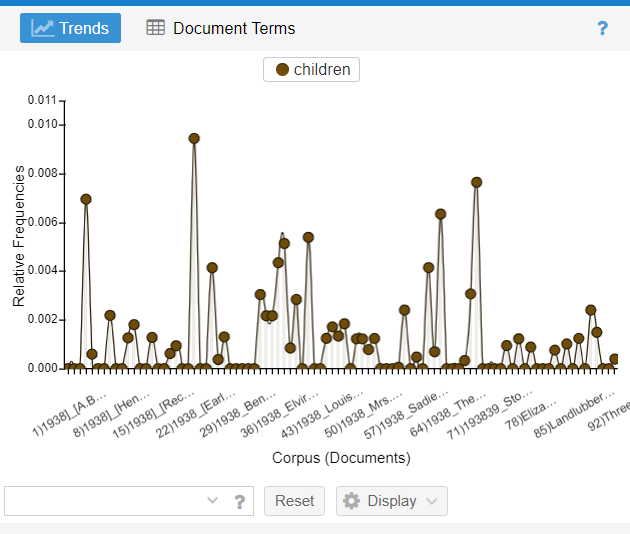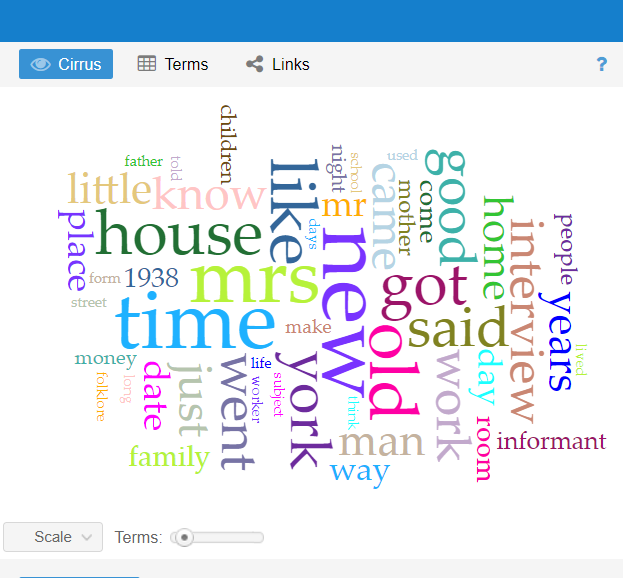The American Life Histories collection, created under the Federal Writer’s Project, serves as a broad corpus of information and firsthand accounts from a time that seems so incredibly different from now. Many questions and ideas can be created when examining the life histories included in the American Life Histories collection.
While my initial question of “How did the New Deal era effect dating and social customs?” worked for my own ten document corpus that I assembled, it didn’t work as well with the classroom one. I made folders on my laptop for four different years that many of the documents were created in and then ultimately decided on the documents created in the year 1938. From there I input that into Voyant and noticed the major words in the word cloud were: 1- the website for the library of congress and 2- resources. Both which I new weren’t words actually important to the content of the document, so I added them to the list of words to be ignored. Upon analyzing the generated word cloud from the 1938 documents, I noticed there was a sort of family and home life theme.
Words such as house, room, Mrs., and family appeared multiple times, thus I thought it would be better to shift my focus to that and changed my historical question to “How did the Great Depression era effect family and home life?”. While classroom lectures had briefly touched on family life during the Dust Bowl and we read about how said families had to move to different places with kids in wagons, as mentioned in 1, there wasn’t an entire lesson focused on how family life changed because of the social and economic factors of the time. In the American Yawp – Chapter V. 2, there is mention of a particular woman’s letter to the first lady about her fear and sadness of bringing a baby into the world they were in at the time (the time of the Great Depression). Both of these came to mind when I was doing a close reading of the document titled Early Railroad Travel, where a father described how he moved his kids from Kansas to Oregon. By doing a closer reading on one of the included documents in the corpus, I was able to conclude that one way families were effected was by the fact that many had to move around for work opportunities. In this way, Voyant was extremely helpful because I was able to pick the specific document because I noticed it was the one that used the word “children” the most.

In conclusion, there’s obviously more research and evaluation that can be done using voyant (and in general) of the corpus. Voyant proved itself to be extremely useful in both a distant and close reading sense. By using Voyant, I was able to draw certain conclusions regarding my own historical question, and I will be utilizing this resource for future projects.

